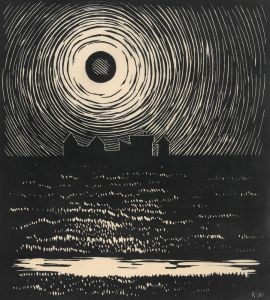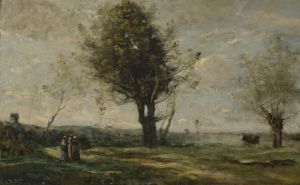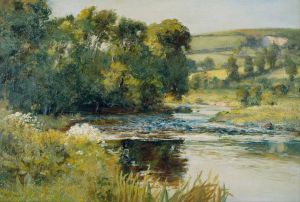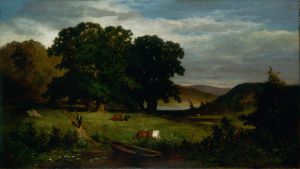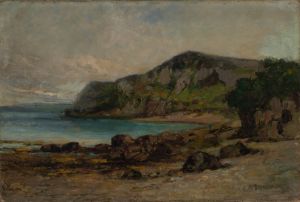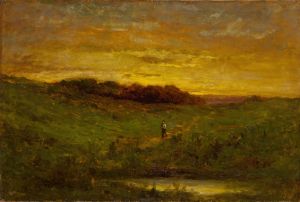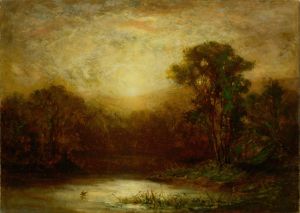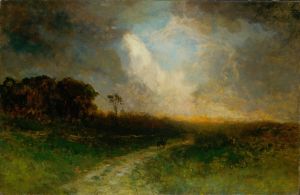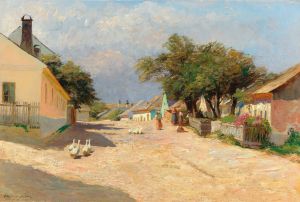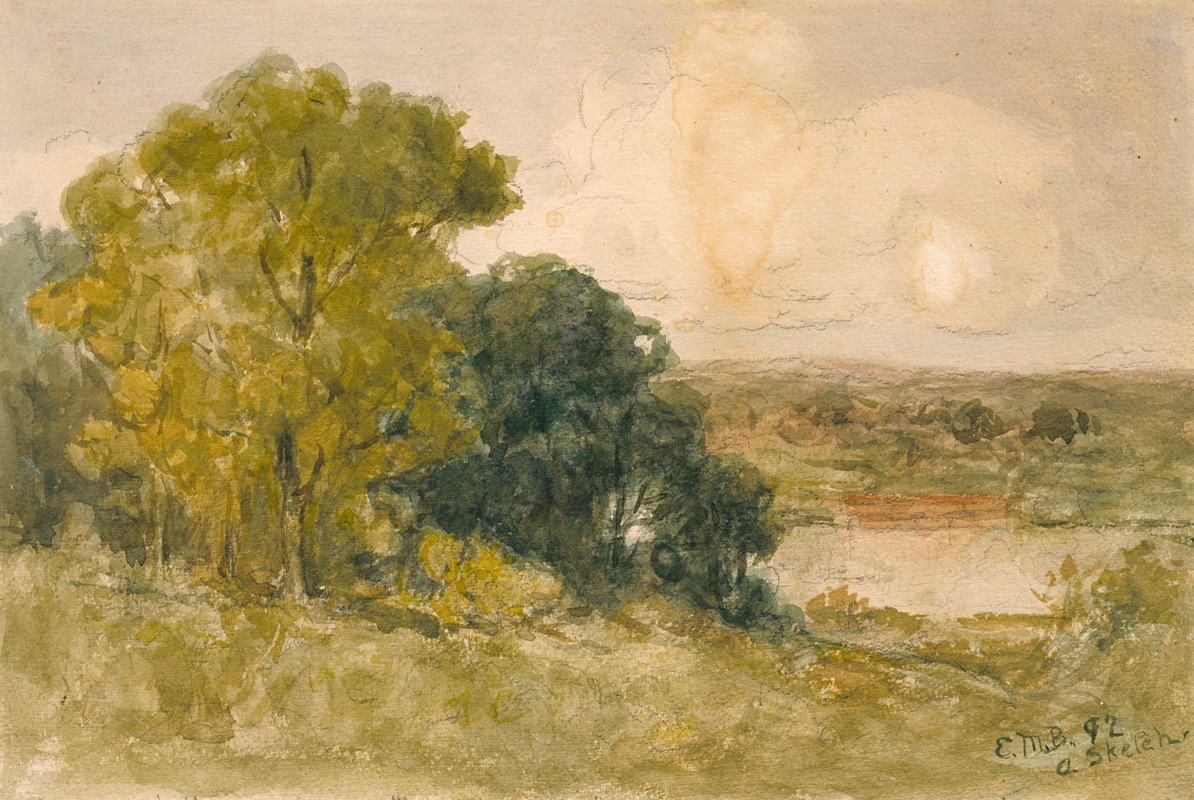
On the Seekonk
A hand-painted replica of Edward Mitchell Bannister’s masterpiece On the Seekonk, meticulously crafted by professional artists to capture the true essence of the original. Each piece is created with museum-quality canvas and rare mineral pigments, carefully painted by experienced artists with delicate brushstrokes and rich, layered colors to perfectly recreate the texture of the original artwork. Unlike machine-printed reproductions, this hand-painted version brings the painting to life, infused with the artist’s emotions and skill in every stroke. Whether for personal collection or home decoration, it instantly elevates the artistic atmosphere of any space.
Edward Mitchell Bannister's painting "On the Seekonk" is a notable work by the African American artist who gained recognition in the 19th century for his contributions to the American art scene. Bannister was born in 1828 in St. Andrews, New Brunswick, Canada, and later moved to the United States, where he became an influential figure in the art community, particularly in Providence, Rhode Island.
"On the Seekonk" is an exemplary piece that showcases Bannister's mastery of landscape painting, a genre that he was particularly fond of and excelled in. The painting captures a serene and picturesque view of the Seekonk River, which is located near Providence. This river was a frequent subject in Bannister's work, reflecting his deep appreciation for the natural beauty of the New England landscape.
Bannister's style is often associated with the Barbizon school, a movement that originated in France and emphasized naturalism and the depiction of rural scenes. His work is characterized by a soft, atmospheric quality, achieved through his use of color and light. In "On the Seekonk," Bannister employs a palette of earthy tones and gentle brushstrokes to create a tranquil scene that invites the viewer into a moment of quiet reflection.
The painting is significant not only for its aesthetic qualities but also for its historical context. During Bannister's lifetime, African American artists faced significant racial barriers and discrimination. Despite these challenges, Bannister achieved considerable success and recognition. In 1876, he won a bronze medal at the Philadelphia Centennial Exposition for his painting "Under the Oaks," a remarkable achievement that underscored his talent and helped to elevate his status in the art world.
"On the Seekonk" reflects Bannister's dedication to his craft and his ability to convey the beauty of the natural world. His landscapes often evoke a sense of peace and contemplation, qualities that are evident in this work. Bannister's paintings are also noted for their ability to transcend the racial prejudices of his time, allowing him to be appreciated by a diverse audience.
Bannister's legacy is significant, as he paved the way for future generations of African American artists. His work continues to be celebrated for its technical skill and its contribution to American art history. "On the Seekonk" remains an important example of his artistic vision and his commitment to capturing the essence of the landscapes he loved.
Today, Bannister's paintings are held in various collections, and his work is studied for its artistic merit and historical importance. "On the Seekonk" serves as a testament to Bannister's enduring influence and his role as a pioneer in the American art scene.






